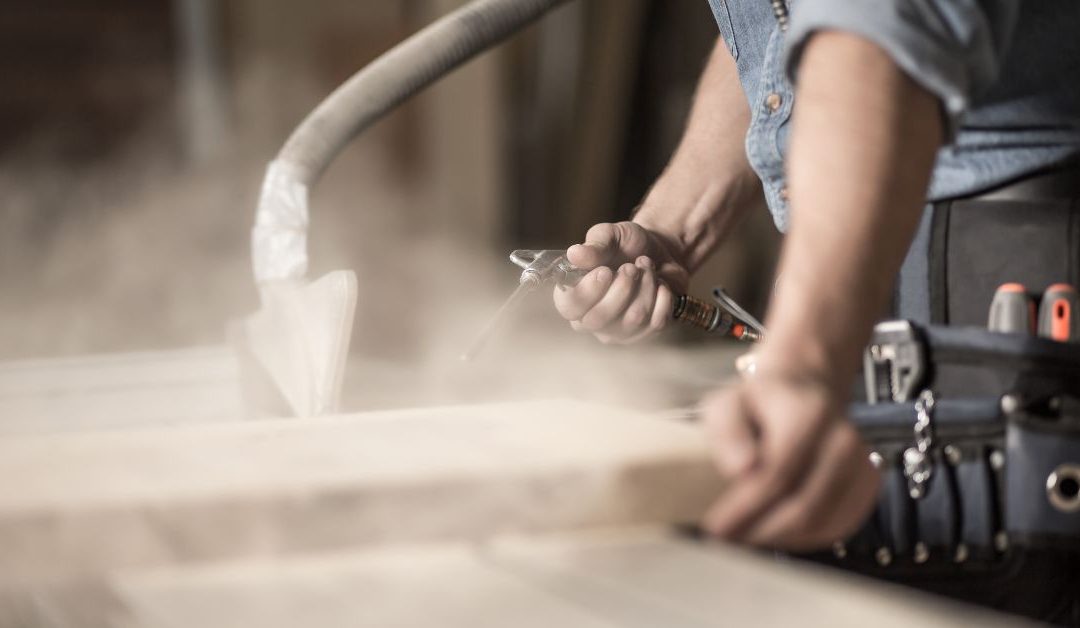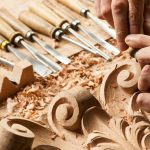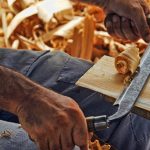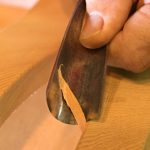The hammam and woodworking are both important parts of Moroccan culture. These crafts have had a long-standing connection and play an essential role in the daily lives of people.
As a cultural anthropologist, I wanted to learn more about this connection. So, I traveled around Morocco and interviewed local artisans and residents.
Their stories taught me how these traditions grew together and why they matter to Moroccan society today.
History Of Traditional Moroccan Woodworking
In Morocco, woodworking has always been a big part of their culture and history. Artisans have passed down their special techniques from one generation to the next.
There are so many different kinds of wooden things in Morocco like there are so many stars in the sky. Each piece has its special meaning and tells a story.
From teapots to trays, chests to doors, Moroccan woodwork is famous for its fancy designs and detailed finishes.
The traditional art of Moroccan woodworking has a connection to the hammam, or steam bath. Moroccan craftsmen made many things for use in the hammam.
They liked using cedarwood because it holds heat well, which keeps people warm in the winter. And the smell of cedarwood adds another nice touch to the hammam experience.
Even with all the new stuff we have today, it’s important to remember and appreciate the ancient craft of Moroccan woodworking. These artists make beautiful things out of plain blocks of wood, showing us how tradition can bring joy and beauty to our lives.
Types Of Woodworking Tools And Techniques
Moroccan craftsmen have been using chisels, saws, and other woodworking tools for centuries. These same techniques are still used today in the hammam.
In the traditional Moroccan process, sanding and routing are important steps. Carving, turning, and joinery are also used to create intricate designs.
To achieve precise angles, craftsmen rely on dowelling and miter saws. Modern Moroccan woodworking also involves using tools like a tenon jig, dowel jig, planers, and nail guns.
Hand planes, clamps, and other tools are essential for creating and attaching pieces.
Chisels
Chisels have been an essential tool in Moroccan woodworking since early civilization.
Different cultures in Morocco have developed unique traditions for using chisels over time.
For instance, the Berber people would sharpen their chisel blades using stones from the hammam, the public bathhouse.
Moroccan culture and woodworking go hand in hand, especially when it comes to sharpening tools.
The hammams became places for sharing knowledge including woodworking techniques.
Craftsmen could learn new skills and discover different ways to use tools like chisels in these spaces.
With a history spanning thousands of years, it is clear that both elements influenced each other’s practices.
Saws
Moroccan woodworkers have used saws for a long time in their woodworking. They are important tools for creating furniture, decorations, and other wooden objects.
Craftsmen can keep saws in good shape by using easier methods like honing and filing. Chisels, yet, need sharpening at the hammam. This allows craftsmen to focus more on the details of their projects, such as choosing the right wood and adding decorative touches.
Moroccan carpenters use different types of saws depending on the size and complexity of what they’re making. They work with local woods like cedar, juniper, olive tree wood, and oak because they are strong and look nice.
Even though saws are simple, they are still crucial for creating beautiful wooden art that lasts.
Craftsmanship Of Moroccan Hammams
Moroccan woodworking is important for building hammams. Craftsmen use tools like saws, chisels, planes, adzes, and drawknives to create beautiful details on the wooden doors and walls. Each region has its style of hammams influenced by local customs.
The woodwork in Moroccan hammams shows amazing craftsmanship. Local artisans carve designs and create latticework on doors, windows, arches, and vents. They pay attention to every detail to make the hammams inviting and special for visitors.
Hammams are special places in Morocco that keep old traditions alive. They have a mix of traditional things like woodwork, fancy tiles, and natural materials like stone and marble. This makes the hammams feel luxurious and modern, while still honoring the past.
Hammams are more than normal spaces – they’re important for Moroccan culture. They let people experience ancient customs and give visitors a special and refreshing time.
How Hammams Contribute To Moroccan Culture
The woodworking in Moroccan hammams shows how culture is important in society. Craftsmen have been using their skills to build these beautiful places for a long time.
The craftsmanship in hammams is not about making things look pretty. It has a deeper meaning that shows the values of the community and the roles of different people. They use special materials like cedarwood and plaster to keep the traditional feel.
Every detail in a hammam tells a story. The carvings on the walls and the handmade doorways show how Moroccans value their history and traditions. These hammams are not about looking nice, they also remind us to respect our past while still looking towards the future.
The Role Of Artisans In Moroccan Society
In Moroccan culture, woodworking is important and shows our identity. Artisans create beautiful things that represent our traditions.
The hammam is a special place where people relax and socialize. Artisans use their skills to make it beautiful and create opportunities for women to be part of this craft.
Woodworking used to be for men, but now women can join too.
Artisans make things for religious places like mosques. This helps people connect with their faith and keeps our traditions alive.
Craftsmen are important because they keep our culture alive and make our country proud. Now let’s learn more about the hammam and its meaning in our communities.
Origin And Meaning Of The Moroccan Hammam
The Moroccan hammam is a special place where people go to relax and feel better. It has been part of our culture for a very long time.
The hammam has two rooms, one for men and one for women. In each room, you can have a steam bath and get treatments with natural ingredients like argan oil and rosewater.
Visiting the hammam is a ritual that helps people connect with themselves and nature. It’s a spiritual experience where you can think about your life and talk with others.
The hammam uses all your senses – you can see, smell, hear, and touch different things. It’s a way to explore yourself and be part of our cultural traditions.
The hammam shows us the importance of traditions and helps us understand our culture better.
The Symbolic Significance Of Woodworking In Morocco
Woodworking is a big part of Moroccan culture. It’s used to make beautiful furniture and carvings that show the values and traditions of the people.
The hammams in Morocco also use wood in their design. The wood helps create a calm and relaxing atmosphere for people to enjoy. The doors, archways, and fountains are all made with wood to give a special feeling to the baths.
Woodworking is not a job in Morocco, it’s a way of life. It shows how much people care about their traditions and heritage. Each hammam is unique and tells a story through its use of wood, connecting visitors to nature and the past.
The Use Of Wood In Hammam Design
Artisans in Morocco have a long tradition of woodworking, and this is evident in the design of hammams. During the Ottoman era, people began using materials like marble, tile, and wood to construct hammams, which came from stone or clay.
As time went on, the craftsmanship involved in building these structures became more detailed. Craftsmen added wooden arches and carved geometric patterns to the walls, doors, windows, and ceilings.
The beautiful wooden designs on the hammams make them even more special. They represent the culture of Morocco and show how different regions have influenced each other.
In conclusion, woodworking in Morocco has had a big impact on the design of hammams, making them unique to neighboring regions.
Cultural Exchange In Moroccan Woodworking
In Morocco, woodworking and the hammam have a long history together. Artisans and community members share skills and knowledge in the hammam, helping each other improve.
Craftsmen and visitors gather in or near the hammam, where they exchange ideas and learn from one another. This sharing of skills and techniques leads to innovation and stronger community bonds.
But, modernization is now impacting both woodworking and the hammam in Morocco. In the next section, we will explore how these traditions are changing in today’s modern world.
The Impact Of Modernization On Traditional Woodworking And Hammams
In Morocco, modernization has transformed the practices of woodworking and hammams. People now prefer modern technology and materials, which has led to a decline in handmade goods. But efforts are being made to keep these traditions alive.
Educational programs teach people about the value of handmade items and the beauty of local craftsmanship. Businesses and artisans work together to create products that reflect their shared values.
People are working together to make sure these traditions are friendly. By keeping these traditions alive, they can help the economy and preserve their culture for the future.
Frequent-Asked Questions
How Long Have People Been Practicing The Tradition Of Moroccan Woodworking?
People have been practicing Moroccan woodworking for a long time. They use special tools to create beautiful and detailed things. They started doing it a long time ago, even before the year 1000 BCE.
As the years went by, the way they do woodworking changed. They learned new ways and made different styles that show the different cultures in Morocco. It’s a tradition that is very important to the people and they still do it today in new and modern ways.
What Types Of Materials Do Moroccan Woodworkers Use In Their Craft?
For a long time, people in Morocco have practiced woodworking as a revered craft. Skilled artisans use special tools like chisels, saws, and drills to create unique and detailed pieces. They work with different types of wood, such as pine, cedar, oak, mahogany, and ebony, to craft beautiful furniture and intricate designs. Even today, modern techniques are still used, but the tradition and attention to detail remain the same. Moroccan woodworking is a cherished symbol of a culture that has stood the test of time.
What Economic Benefits Does The Craft Of Woodworking Bring To Morocco?
Woodworking in Morocco is an important way for people to make money. Skilled carpenters teach their skills to others, which creates new job opportunities. This helps the Moroccan economy grow. Making furniture on a large scale also creates many jobs for both men and women. This means more people have money to spend, which helps local businesses.
How Does The Use Of Wood In Hammam Design Reflect Moroccan Culture?
Wood is an important cultural symbol in Morocco, and its use in hammam design reflects this. Craftsmen with special skills create lovely wooden furniture for steam baths. Wood is meaningful in Moroccan culture because it symbolizes strength and respect for tradition. Woodworking is important in Morocco because it helps express these values through the furniture.
How Has Modernization Affected The Craft Of Woodworking In Morocco?
Modernization has both helped and challenged woodworking in Morocco. On one hand, it has brought advanced tools and techniques that make the craft more sophisticated. But, it poses a risk to traditional forms of woodworking.
Artisans in Morocco find themselves with a toolbox full of modern power tools and ancient hand tools, each with its significance. Artists in Morocco have a challenge – they need to find a balance. They have to use old ways and things that are traditional, but they also have to come up with new ideas. At the same time, they have to keep the timeless beauty of their work.
Woodworking is an important tradition in Morocco, and it reflects the country’s culture through its use of wood in hammam design.
Many families rely on this craft for income and to support the local economy.
As we move into the future, it’s important not to forget about these amazing artisanal practices that have shaped our history.







